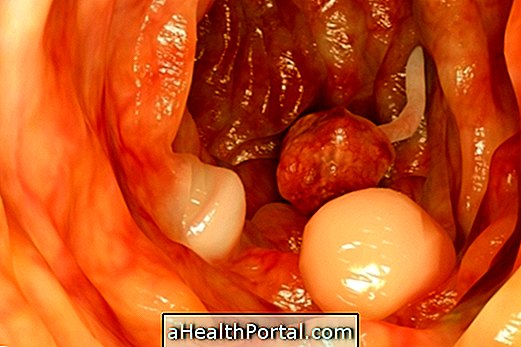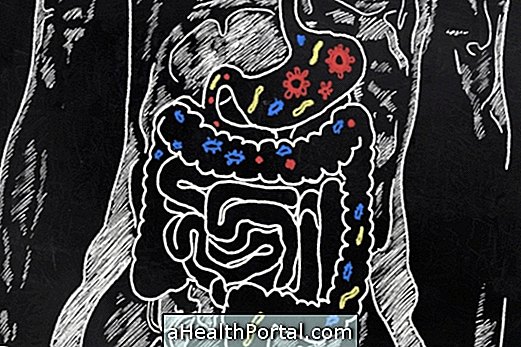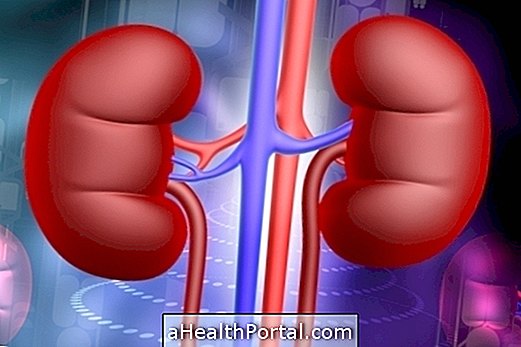The villous or tubulo-villous adenomatous intestinal polyps may become cancer, however, not everyone will undergo this transformation. There is a greater risk of developing colorectal cancer in sessile polyps, which are flat and have more than 1 cm in diameter, and the larger the size, the greater the risk.
However, most intestinal polyps are hyperplastic, which are benign and rarely see cancer. Both can be identified and removed at a colonoscopy, reducing the risk of developing cancer. See how the removal of intestinal polyps is done.

Who is at greatest risk of developing bowel cancer?
Some factors that may contribute to the development of colorectal cancer are:
- Presence of several polyps in the intestine, and the larger the polyp, the greater the likelihood of becoming malignant;
- Low-calorie, high-fat animal source food;
- Cigarette smoking and excessive consumption of alcoholic beverages;
- Age over 50 years;
- In case of hereditary diseases such as familial adenomatous polyposis, Gardner's Syndrome, Turcot Syndrome and Lynch Syndrome.
The presence of inflammatory bowel diseases such as ulcerative colitis and Crohn's disease also increase the risk of developing cancer.
How to reduce the risk of polyps turning cancer
To reduce the risk of bowel polyps becoming cancer, it is recommended to remove all polyps more than 0.5 cm through colonoscopy, but it is also important to practice exercises regularly; have a high fiber diet; not smoking and avoiding the consumption of alcoholic beverages because these factors facilitate the onset of cancer.

How to Identify Intestinal Polyps
Most intestinal polyps do not produce symptoms, especially early in their formation and so it is advised to do colonoscopy in case of inflammatory bowel diseases and from the age of 50 everyone should do this test.
1. Symptoms
The symptoms of polyp in the gut can be:
- Change in bowel habits, which may be diarrhea or constipation;
- Presence of blood in the stool, which can be seen with the naked eye or detected on a stool test;
- Abdominal pain or discomfort such as intestinal gas and colic.
The most common is that intestinal polyps cause bleeding after bowel movements, with the rest of the symptoms being less frequent.
2. Exams
In case of suspected intestinal polyps, the doctor may order tests such as radiography and colonoscopy, which is the examination used to visualize the internal walls of the intestine. After identifying a polyp less than 0.5 cm the doctor may decide not to remove it and repeat the examination after 3 years. There is no need to take the exam annually because the polyps take about 5 years to grow and change. Here's how to prepare for colonoscopy.
Polyps larger than 1 cm are usually removed during colonoscopy and sent to the pathologist for analysis to see if there are cancerous cells or not. If cancer cells are present, the physician should refer the patient to the oncologist for treatment.
After the result of the first colonoscopy, the doctor will guide the patient when the test should be performed again. In general, a colonoscopy should be repeated:
| Situation of the patient | Do the colonoscopy again after: |
| Absence of intestinal polyps | 10 years |
| Hyperplastic polyps less than 1 cm | 10 years |
| 1 or 2 tubular adenomas less than 1 cm | 5 years |
| 3 to 10 tubular adenomas | 3 years |
| 10 or more adenomas | 1 or 2 years |
| 1 or more tubular adenomas> 1 cm | 3 years |
| 1 or more villous or tubulo-villous adenomas | 3 years |
| 1 adenoma with signs of high-grade dysplasia | 3 years |
Doctors gastroenterologist and proctologist are the most indicated to treat intestinal polyps and during a consultation all doubts can be clarified in person, and a good way to calm the patient.
See What to speak to your doctor at the appointment for a faster diagnosis and more accurate treatment.























